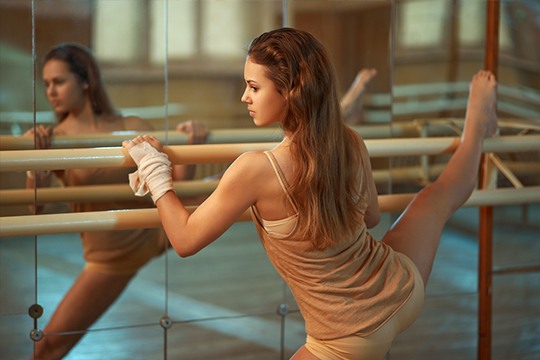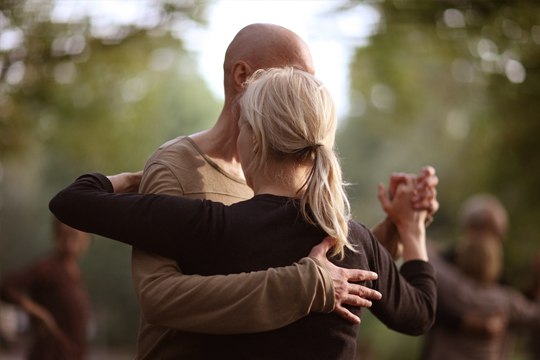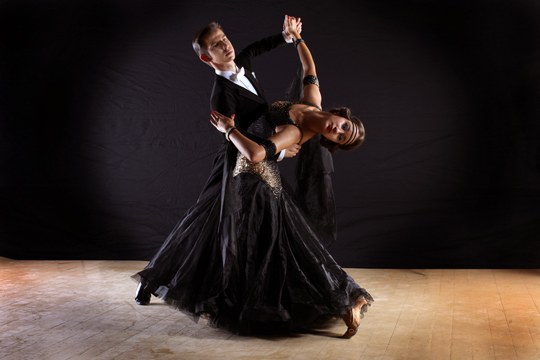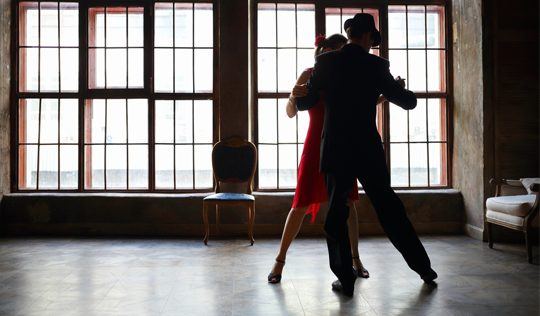In creating business relationships we all know it’s a good idea to build rapport when Networking, but if it’s not immediately there how do we get it?
You could do worse than learn to dance the tango…
I have been dancing tango for seven years, and if there is something I have learned it’s that partnered dancing is just like human relationships: complicated and beautiful. And there are techniques to navigate them effectively.
If you get it right, you can unlock huge potential and build on each other’s experience and ideas. Divergent points of view can become the catalyst for exploration and co-creation, and a common goal can channel the energy of the team above and beyond the reach of any one individual.
Of course, this may be no easy thing.
Boxes can be handy…
First of all, you have two – or more – people with different backgrounds, a unique personality and their own baggage. We carry the weight of our personal story, and with it our assumptions about the world and about other people.
But they can get in the way
It’s much easier to put something in a box – a category that helps our thinking – than challenge the boxes we regularly use to filter our view of the world. On one side, we can’t question our view of the world at every corner, and on the other side, if we get too rigid in our position, we may forget to question those views and lose the opportunity to learn and grow.
Confidence
On top of that, there are many things that influence how we may be perceived: the way we look, speak, move and – oh here it comes – how confident we appear. It seems like confidence is the ultimate intangible quality that one must have to succeed in this world. What if we don’t feel like we have it?
We can safely say that many people around us share similar worries, whether they show it or not. Everyone makes mistakes. What’s important is to learn from them and keep on practicing.
Networking
Now, imagine you are at a networking event where you want to approach a key stakeholder and build rapport. How might you go about it?
Here are some tips from the world of tango.
Prepare

- Have a Strategy
It is important to know why you are at a particular networking event. Who do you want to meet? What is your goal? How do you know you will have met it? Research the people you know you want to interact with. Be clear on why you want to talk to them and what they could get from talking to you. Once you have set things in motion, they tend to flow in the right direction. No need for a script, just hold your clarity.
The first thing a dancer usually does when they arrive is to sit for a moment and observe the floor. They check out the other dancers and, before engaging, decide which ones they would like to dance with. They know which dancers they are interested in and also which ones they are not interested in.
- Dress the Part
We are social animals and we like to belong. The first step to belonging is to learn about the customs and rules of the house and choose your image and style. This doesn’t mean to conform completely, but rather to find your own distinctive way of standing out while swimming in the stream. Also, don’t forget that this can be fun. The more you enjoy yourself, the more others will be attracted to you.
When a tango dancer enters a milonga – the ballroom for tango – they are wearing a specific dress or suit which is in accordance with the formality or informality of the event and also exhibits their personal style. They are ready to shine and impress, and most of all, they are prepared to have a great time.
- Pause to Check In
Feeling comfortable in approaching someone does not only have to do with the mind, but also with the body. We are holistic beings, which means that if we relax the body, the mind will follow. As many athletes do before racing, take a pause before action and check in with yourself. Focus on the flow of your breath. Mindfulness and breathing help to reduce any tensions and make you look more confident.
The dancers who are easiest to approach are those who appear to be relaxed and open. You will see them sitting comfortably in their chair or standing to the side, straight but not stiff, available but not needy, clearly available or unavailable for connection based on their body language. It is useful to notice what signals they are expressing before approaching them – nobody likes to be approached at an inconvenient time!
Engage

- Focus your Glance
The easiest way to get another’s attention is to become visible to them. One way to do this is to focus your eye contact on the person whose attention you want, with the intent of catching their interest. Chances are that they will notice you and look back. Eye contact is a very powerful tool to communicate before we even start approaching someone. Once the eyes lock in, you have a chance to engage. A smile may help to smooth things and get started.
When a dancer wants to invite another dancer, or be invited by them, they will look for each other on the dance floor. When the eyes lock, there is a split second for both to decide whether they want to communicate a yes or a no. If it is a no, they will quickly glance away. If it is a yes, one of the two – typically the leader – will tilt their head in what is called a “cabeceo”, and the other will nod in response to accept the invitation. There is no space for awkward verbal exchanges. Both dancers know with a glance whether they are interested and ready to engage.
It is amazing how much we can say without words, right?
- Approach with Intention
Once you have permission to approach, it’s time to grasp the chance to get closer and engage. Think about how you might want to come across – confident, friendly, knowledgeable… what is the right word for you?
Pick a word that works for you and is appropriate for the person you are meeting and the context you are in. Hold it in your head as you approach. Your greeting will come out accordingly and your body language will adapt to serve your chosen impression.
When two dancers are ready to dance, one readily walks towards the other while keeping eye contact. When they finally greet each other, it follows on naturally from everything that has happened before, as if they had already known each other before even speaking. Then they walk together to the spot in the milonga where they want to start the dance. This is mostly done in silence.
Dance

- Embrace and Sync
Once you have greeted your stakeholder, it is time to dance! It may feel difficult to know what to say right away – our heads have a way of messing with us – however it is not necessarily up to you to come up with something. Prompting with some questions and simply being interested in the answer is already a great start. Most importantly, actively listening to what the other has to say without judgment is an effective way to sync in with them.
The very first action to sync with a dance partner is not movement but embrace. Finding the right touch in stillness and taking the time to make each other comfortable is necessary in order to confidently take the first step.
Often, two dancers will connect through breathing, and upon taking a deep breath together, take their first step with confidence and ease.
- Lead and Follow
So who leads the conversation? In a balanced conversation everyone gets a chance to lead and follow. You may find yourself moving on to different topics and in different directions too.
If you are following passively, you may walk out of the conversation without having found what you were looking for, and you may not get another chance. However following actively is an art. It is the ability to expand your mind to connect with another point of view and letting it fascinate and interest you.
Similarly, in tango, leading does not mean imposing and making every decision about what is going to happen. On the contrary, a good leader is someone who is able to give space to their dance partner, to make them feel at ease and comfortably change course if they suggest a different route. It requires flexibility, care and attention.
Seen from the outside, the roles look fluid, as each dancer leads and follows the other beyond their roles in the flow of the music.
- Build on each other
Building on each other is a wonderful way to explore your connection. When the conversation is flowing and ideas come up, it is only natural to connect them to our own ideas and experiences. Commonalities can bring us closer together.
So what about the differences? They may seem like obstacles at times, but they can also be seen as a gift and an opportunity to see things from a different angle. When we are open to what is different and unexpected, we become creative.
Playfulness and exploration are an important part of dance. Dancers often switch partners, so they have to be ready to adapt to different embraces, patterns and preferences. When things go wrong, some may find it excruciatingly difficult to move forward, while others choose to play with unexpected moves and accept that things don’t always go in the direction they thought. This attitude opens up new possibilities. Exploring those possibilities with a dance partner creates a special bond and is often a lot of fun.
Close

- Thank you, what’s next?
Whether we like it or not, time may be limited and things eventually come to a close. Making a memorable exit may be as important as making a distinctive entrance. Dragging our goodbyes too long may be annoying and cutting them short too soon may feel abrupt. Observing the other person’s non verbal communication is key to choosing the right time to exit. However, what is often overlooked is the next step.
Closure is looking at what comes next. If you want to keep in touch, it may include a request to chat again or the promise to share interesting information, or whatever you think will be useful to make sure you are saved in their contacts.
When the set of tango songs – “tanda” – is over, it is common courtesy for the leader to accompany the follower to their seat. There is a set time in which the transition to other dance partners happens, which is marked by a “cortina”, a small frame of non-tango music, before the next set starts. In this case, the transition is made easier by the music cue, though dancers may also choose to interrupt their dance in advance, or to continue dancing together.
- Follow up and Reflect
After your networking event, it may be useful to spend some time reflecting on what worked and what didn’t work, whether you were able to build rapport, and how far you were able to move towards your goals.
Did you speak to the people you were interested in? What do you take away from the event? What else do you need to do? Following up with your key people in a short span of time is crucial to keeping in touch and make sure you will be remembered.
In tango, the time for reflection and follow up is mostly available during classes and “practicas”, which are specific occasions where people meet to practice together, allowing space for experiments and mutual feedback.
We have seen how dance can offer many insights on how to prepare, approach and engage with another person.
Just like human connections, it is as an ongoing learning experience. And the more we do it, the more we get good at it.
So next time you need to build rapport or do some high quality networking why not get on out there and try out your special moves?


Leave a comment